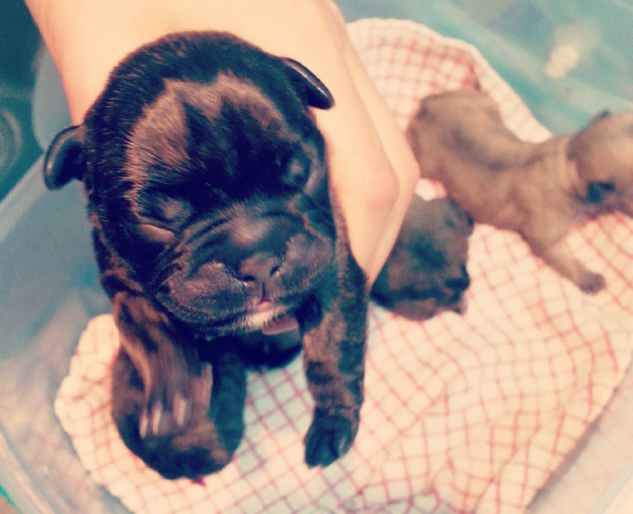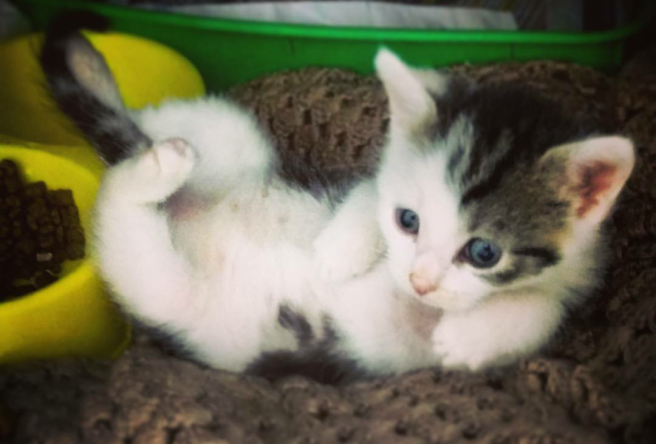
One case on a weekend afternoon shift at the veterinary hospital that still stands prominently in my memory: a lady had called up distressed, her cattle dog had gotten into the bins outside her house and ingested rat bait. (To protect privacy, let’s call said dog “Scruffy”.) Rat bait is severely toxic to dogs, what’s worse is that it smells appetising to them. By the time Scruffy got to the hospital, he was having severe seizures. Immediately, the veterinarian and I managed to get a catheter into his arm to start fluid therapy. Once anesthetised, we performed both a gastric lavage and an enema, then gave Scruffy a large amount of activated charcoal through an esophageal tube, which prevents the absorption of various toxins from the stomach and intestine. All in all, we spent about three hours saving Scruffy’s life, and he made it.
While studying, I lived and worked at a veterinary hospital. I would work alone on the overnight shift, having access a veterinarian to phone to discuss treatment of a patient. When emergency surgery was required, the veterinarian would come in and we would perform it together. Overnight emergency shifts would typically begin with an update on the patients in hospital – which animals need medicating, which critical care patients needed monitoring. Fielding all phone calls overnight, providing advice and recommending owners bring their pets in when necessary. When emergency cases came in to the veterinary hospital, I would perform the consultations, including physical examinations. Upon advice from the veterinarian, I would administer treatments and monitor the patient.
Other nights, the shift could begin with an after-hours surgery, with one of the veterinarians staying back to perform the procedure, such as an emergency eye enucleation on a cat. At my time at the veterinary hospital, I was fortunate enough to have participated in a vast range of surgeries, during my day shifts as well. I had to opportunity to desex a cat, under supervision of course. I was given a chance to perform minor dental surgery, learned how to perform a thoracocentesis procedure on a cat with severe pulmonary oedema due to heart disease, and occasionally got to “scrub in” and assist with various surgeries. One surgery I remember quite well, was an intestinal resection on a dog who had a penchant for underpants! It was the only way to get them out, they were causing a severe blockage.

The most common cases I would have during an overnight shift often included: gastroenteritis or pancreatitis; toxicity cases, where I would need to induce vomiting (you wouldn’t believe the sorts of things that dogs seek out to eat, including tampons); allergic reactions; rabbits who had stopped eating and defecating for period of time, usually indicating gut stasis; dogs going through heart failure; injured wildlife; pets who were lethargic or listless for a variety of reasons; blocked cats (male cats who were unable to urinate – if this reoccurs frequently, the main solution is an actual sex change); tick paralysis; and stray dogs. The most common emergency surgery was GDV (gastric dilation and volvulus), commonly known as “bloat” whereby a large, deep-chested dog stomach twists – the twisting traps air, food, and water in the stomach, which if left untreated can cause death.
Often you would get attached to the furry patients – particularly the regulars, or animals who had to stay in for a week or a few. Sometimes they would make a miraculous breakthrough, other times they would not. The downsides of the job, to only name a few, were having to tell young children that their pet is no longer with us; the obvious, having to euthanise animals, including wildlife; seeing animals who had been subject to cruelty; not being able to save an animal for whatever reason; witnessing an animal unnecessarily suffer due an elective surgery gone wrong. There were veterinarians who I’d come across, who would say “I thought I was going to have time to play with and cuddle animals”, which is not often the case because they are too busy (depending on what type of clinic or hospital they work for). Some veterinarians I knew would set a time during each week to cry, as a coping mechanism to get through and let the sad, frustrated emotions associated out. These mentioned veterinarians are passionate and love the rewarding aspects of their work though, and they are fantastic at their job.
It is important to raise awareness that the veterinary profession can understandably carry a huge emotional toll. Devastatingly, the suicide rate among veterinarians has now quadrupled. However, veterinary schools have now been implementing more awareness and emphasis on mental health, by incorporating this into the compulsory curriculum. Aware veterinary practises are also providing an anonymous complimentary counselling service available to their employees and their families, to help combat this.
Aside from the downsides, I am not going to deny that the career was rewarding and at times exciting. Especially during moments like a caesarean section, where you get to help a newborn puppy take its first breath and the subsequent squeak that comes along with it! I enjoyed working in emergency in particular, because it enabled me to be a part of actually saving animals lives. If I am being honest, the hardships of the career had a large impact on me, emotionally and physically. It was too much to work in this environment (12 hours on call, pretty much every second night), plus going to university everyday to study such a demanding and rigorous degree. In the end, I gave up because I fell ill. I was physically and emotionally burnt out, and for a time I had become bitter. Physically, I developed bizarre symptoms that took countless specialists appointments and time to diagnose. One was that my right hand and upper limb developed an incurable action tremor, which would mean I could pretty much no longer be able to perform surgery. I enjoyed surgery the most. I do not know if the burnout led to the illness, or if it was bound to happen anyway, for other physiological reasons. Further, I decided not to try and continue the degree because I personally couldn’t keep placing myself under so much debt by continuing to study such an expensive course, if I wasn’t going to be perform to my fullest due to physical limitations. Not that monetary gain is a priority, but veterinarians generally do not get paid very well either, which would have made catching up on my debt an even larger task. Add that to living in an expensive city, meant continuing to rent, which would have involved needing to continue to work enough hours to support myself, whilst finding time for class, study and placements. The course requires many hours of study dedicated to just pass. On top of my declining health, it would not have been practical for me to continue. All this being said, I have accepted that this is not the right path for me, given many factors. I do believe that in general, it is a fantastic career choice though. I cherish all the positive times, challenges and adventures. I am incredibly thankful for the opportunities that I was given at the veterinary hospital that I worked at. I loved my time at veterinary school and met some pretty amazing people along the way!



This is such an insightful and informative post! I’m sure that it will be super helpful for anyone considering veterinary science as a possible career path 🙂
LikeLiked by 1 person
Thanks for your kind words and support!
LikeLiked by 1 person